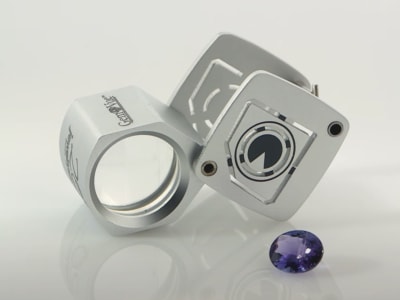Learn about the loupe, the go-to tool for gemologists and rock enthusiasts! When it comes to observing gemstones and minerals, the human eye is always a good start. However, using a gemologist loupe is the best next step for observation (especially for gemstone features), and observation should always occur first for gemstone identification.
What is a loupe?
A loupe is an optical tool used to magnify and view objects more closely and clearly. Gemologists and gem enthusiasts use loupes to inspect external and internal features of gemstones, minerals and gem materials. In fact, some refer to loupes as a gemologist’s best friend! Gemologists or anyone with time and practice can use a loupe to look at the external features of a gem: luster, facets, fractures, scratches, cleavage, or even surface clues for gem material treatments. A loupe can also be used to search for inclusions inside gemstones.
Gemstone inclusions can be described as imperfections or the presence of different material in gemstones that can interfere with light, and inclusions are also internal damage within gemstones caused by the presence of different material. Some examples of inclusions are solids, liquids or gasses trapped within. These inclusions can also occur within each other known as monophase, two-phase or three-phase inclusions depending on how many are present. Other inclusions can be color zoning, shaped inclusions like rutile needles or hollow growth tubes, healed fractures or internal treatment (dye or fillings) to help identify them as well.
Moreover, there are different magnifications for different loupes. 10x loupes magnify what you are seeing by a factor of ten and are the most popular and easy-to-use loupes, especially for beginners. A 10x loupe is also an affordable, portable and reliable tool for almost any basic gemstone observation.
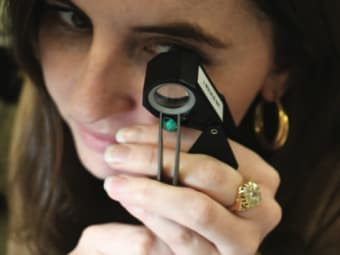
How to Use a Loupe
Steps for properly handling a loupe:
- If necessary, clean your gemstone or crystal before viewing. Use a clean cloth to wipe away dust or fingerprints for a clear view.
- A loupe should be held in front of the viewer’s dominant eye. If unsure of which eye is dominant, point a finger at a distant object, close each eye separately for a few seconds, and observe whether your finger moves or doesn’t move while viewing the item. If your finger doesn’t move from your target, that is your dominant eye; if your finger does move away from where you’re pointing, that is NOT your dominant eye.
- Hold the gemstone or mineral specimen in one hand, and hold the loupe with your other hand between the specimen and your eyes. We recommend tweezers for faceted gems and fingers for crystals. Let both hands rest against each other and line up the specimen in front of your loupe. Then align the loupe in front of your dominant eye. Doing so will create a straight line of vision for the gem specimen, your loupe and your eye.
- Maintain a good distance between your gem material, your loupe and your eye when viewing the gemstone. Let your loupe hand rest against your cheek below your dominant eye. Use your dominant eye to look through the loupe in one hand while holding the gem material in front of it.
- Get in a comfortable position to help view multiple gemstone or mineral specimens for as long as necessary.
- Keep both eyes open to avoid eye strain when using a loupe. Remember to breathe and relax while looking through a loupe. Follow these steps and practice viewing many gemstones and minerals to get experience using a loupe.

It’s always a great first step to view a gemstone or mineral specimen with the naked eye before using a loupe, but the 10x loupe is the next best tool for the job.
What types of loupes are there?
Not all loupes are created equal, so here’s a couple of the key differences to keep in mind when looking for the right look for your gemstone observations.
- Levels of Magnification
- Number of Lenses
- Different Uses
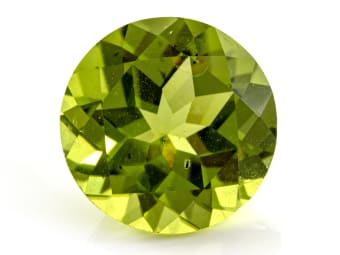
Levels of Magnification
There are different levels of magnification like 5x loupes, 10x loupes and 20x loupes that come in various sizes from 10mm to 30mm and more. We recommend that any beginner who wants to pick out a loupe should choose a 10x loupe. Unlike a 20x loupe or one with even higher magnification, a 10x loupe is easier to focus on gemstones and minerals with a better depth of field, easier to avoid shaking while viewing specimens and is simple to use with good lighting.
Loupes with lower magnification, such as 5x loupes, can make it difficult to see gemstone and mineral specimens as clearly. In some cases, higher magnification can be harder to keep in focus and even cause eye strain or headaches.
Number of Lenses
When choosing how many lenses you want your loupe to have, there are many options: single, doublet and triplet lens loupes.
- A single-lens loupe has only one lens that can magnify an object for a closer view, yet it’s advised to only use one up to 3x since any higher can cause poor image quality.
- A doublet lens loupe uses two lenses to provide higher magnification than a single lens and limits image distortion.
- A triplet lens loupe offers the same benefits as a doublet but has a lens for magnification, a lens that is aplanatic which removes distortion, and a lens that is achromatic which removes chromatic aberrations such as color fringes. Color fringes are the distortion of color along the edges of a gem specimen or mineral. This optical effect can be seen in photographs and other objects as well.
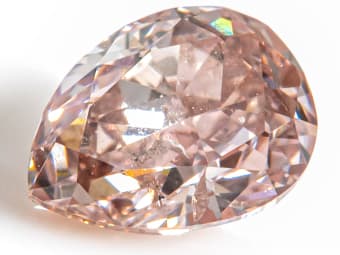
Different Uses for Loupes
There are also other loupes used outside of the gemology industry for different purposes.
Examples include surgical or dental loupes used in the medical field for a closer look at the human body. Loupes are often used for inspecting smaller items in electronics, and scientific research in subjects like biology and geology, and magnification loupes can even be used by watch and clock makers to place small gears and machinery.
Lastly, loupes can appear in different forms such as monocular loupes, binocular loupes, attachable loupes, head-mounted loupes and loupes that can even be placed on stands to view through.
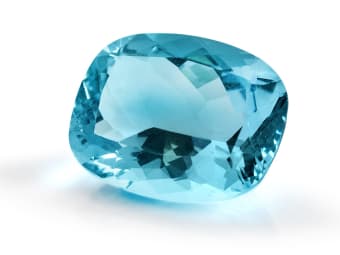
When was the loupe invented?
The origins of loupes can be traced back to lenses in ancient Egypt as far back as 2500 B.C.E. followed by Mesopotamia, ancient Greece and Rome. These first lenses were certainly simple compared to today’s advancements. Lenses that could magnify up to 2.5x were discovered much later in ancient Rome and by the Middle Ages, lenses improved with the creation of spectacles or the wearable eyeglass by Friar Salvino D'Armate in 1284 C.E. Lenses continued to advance with the double lens telescope created by Hans Lippershey to view stars in 1608, and later on, the microscope was created for inspecting objects and insects.
Since then, the first “loupe” that inspired modern ones was a surgical loupe with two lenses created by a German doctor in 1876. Since then, loupes have been widely used in the medical field for both surgery and dentistry, and the gemology community has come to value the observational abilities of loupes as well.
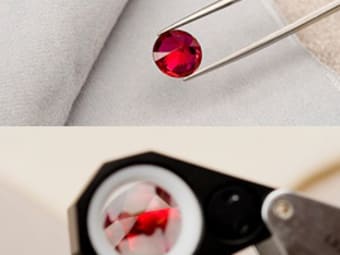
Where to Buy a Loupe
Want a loupe to help you take a closer look into the world of gemstones?
JTV offers affordable loupes in a variety of magnifications, styles and sizes. Finding the right, high-quality loupe for your gemstone observation needs has never been easier.
Not finding what you need? Many major retailers may sell jewelry loupes online and occasionally, jewelry stores, scientific supply stores or specialty stores may sell loupes. Lastly, gemology organizations like the Gemological Institute of America (GIA) or the Gemological Association of Great Britain (Gem-A) may offer loupes for sale or for free through their classes.
References
- Clark, D. (2022, June 20). 10X Loupe for Gemologists and Jewelers. GemSociety. Retrieved from https://www.gemsociety.org/article/10x-loupe-the-gemologists-best-friend/
- Gem-A, The Gemmological Association of Great Britain. (2008). The Foundation in Gemology Course.
- Glasses History. (2023). History of Optics and Lenses. Glasses History. Retrieved from http://www.glasseshistory.com/glasses-history/history-of-optics/
- Jing, R. (2020, December 21). Common Types of Loupes Used in Different Industries. LoupeDirect. Retrieved from https://www.loupedirect.com/common-types-of-loupes-used-in- different-industries
- McClelland, E., Marzouk, S., Coyle, P., & Tatla, T. (2019). Optical Loupes: A Useful Tool for the Oncall Otorhinolaryngologist-Our Experience. Indian journal of otolaryngology and head and neck https://doi.org/10.1007/s12070-017-1158-6
- Skvarla, M. J. (2017, September 5). A Brief Guide to Hand Lenses. Frost Curators' Blog. Retrieved from https://sites.psu.edu/frost/2017/09/05/a-brief-guide-to-hand-lenses/
- West, S. (2020, February 25). A brief history of the lens. OpenLearn. Retrieved from https://www.open.edu/openlearn/society-politics-law/sociology/brief-history-the-lens
